Thermal Oxidation
Thermal oxide (silicon dioxide) is a silicon dioxide film produced by the oxidation of substrate silicon, usually at temperatures in excess of 1000°C. Thermal oxides can be grown using a "dry" oxidation process:
Si + O2 → SiO2
Or a "wet" oxidation process:
Si + 2H2O → SiO2 + 2H2
Dry oxidations are typically performed at 900°C - 1200°C at high oxygen pressures. Dry oxidations exhibit the lowest oxide growth rate of the thermal oxidation processes used in semiconductor device manufacture, typically around 14 - 25 nm/hr. Because of this, dry oxidation processes are normally used only for processes that require silicon dioxide film thicknesses of less than 100 nm. Dry oxidation processes tend to produce silicon dioxide films with the highest quality electrical and material characteristics. "Wet" oxidations can be performed using either entrained water or in situ generated steam produced by the reaction of hydrogen and water:
2H2 + O2 . 2H2O + Si → SiO2 + 2H2
Historically, wet oxidation was used in the LOCOS (LOCal Oxidation of Silicon) process for the production of electrically isolating "field oxide" in older device designs. The use of TEOS oxides and new flowable CVD films has largely supplanted this process in advanced device fabrication.
Silicon dioxide has been, arguably, the most important material of the different thin films employed for semiconductor device fabrication for more than a half century. Indeed, the fact that silicon forms a stable and adherent oxide with good electrical properties is probably the reason why. As a consequence, many studies are available in the literature that deal with the growth and characterization of thermal silicon dioxide thin films and the interested reader is referred to these works and references contained therein for an in-depth understanding of such aspects as the oxide growth mechanism and interface characteristics. Practically, thermal silicon oxides can be grown using a variety of equipment configurations and the best approach depends on the particular device requirements. In this section we will describe those equipment configurations that would most likely be encountered in the semiconductor fab.
Wafer Surface Preparation
Thermal oxides are used primarily for gate oxides in silicon semiconductor devices. In this application, it is critical that the silicon dioxide/silicon interface be as perfect as possible with a minimum of atomic scale defects such as "dangling" chemical bonds and non-stoichiometric hydroxyl contaminants, as discussed in Wafer Surface Cleaning. To ensure this, substrates normally undergo a surface preparation step immediately prior to oxidation. This step typically involves the removal of any native oxide followed by hydrogen passivation of the surface using a dilute HF-last process. Alternatively, silicon surfaces can be passivated using a remote plasma-based process.
Batch Thermal Oxidation
Figure 1. Horizontal hot-wall furnace load station.
Both dry and wet thermal oxide films can be produced using batch processing and resistively heated tube furnaces. These furnaces can be configured as either "horizontal hot-wall" or "vertical hot-wall" furnaces. Horizontal and vertical furnace systems are ubiquitous in older semiconductor fabs. Any reader who has visited an older fab will be familiar with these installations. Figure 1 shows an image of a conventional "load station" of a horizontal hot wall system. Unfortunately, it is extremely difficult to automate wafer handling in horizontal systems and ultra-low particulate processing demands such automation. Furthermore, vertical furnace processing has been found to yield better oxide film uniformities across the substrate surface. For these reasons, any batch processing that is found in more modern fab environments is usually conducted in furnaces configured for vertical processing. Such configurations can be readily adapted to robotic, cassette-to-cassette wafer handling and FOUP interfaces. For this reason, horizontal systems will not be considered further in our discussion.
Figure 2. Vertical thermal batch furnace.
Figure 2 shows a schematic diagram of the internal components in a verticle furnace. Wafers of up to 300 mm diameter can be processed in vertical furnace environments. In a typical "dry" oxidation process, wafers are robotically transferred from a FOUP pod to a quartz wafer holder within the furnace. This wafer holder, commonly called a "boat" or "cassette", is used to hold the wafers during processing. These boats maximize the number of wafers processed for a given spacing between wafers since a minimum spacing between wafers is required to maintain acceptable uniformity of the oxide film across the wafer. A typical batch will contain 50 - 100 wafers with a number of baffle (non-process) wafers located at the top and bottom of the load. The quartz boat is mounted on a mechanical elevator. Once the boat is fully loaded, the elevator raises the load into the hot environment within the quartz process tube, sealing the tube against atmosphere. The tube is usually hot during the load step, but at a lower temperature than during the oxidation process. The ambient atmosphere within the wafer handling compartment and process tube is an inert gas in order to eliminate any potential for uncontrolled oxide growth as the wafers enter the hot zone of the furnace. After the load is in the hot zone and the tube sealed, the temperature is raised to process temperature, again under a blanket of inert gas that prevents any oxide formation. Process temperatures can range from 1000 - 1250°C. Temperatures and temperature profiles within the furnace must be precisely controlled, usually to within tolerances of ±0.5°C variance from setpoint or less. Once the whole system has equilibrated at the desired process temperature, the oxidant gas is introduced and the oxidation allowed to proceed for a fixed time, forming the oxide film on the silicon substrates. The oxidant gas can be (most often) high purity oxygen or a mixture of pre-combusted hydrogen and oxygen (steam + oxygen), depending on the device requirements. After the oxidation has proceeded for the prescribed time, oxidant gas flow is shut off, the tube is purged with inert gas and the temperature of the system lowered to the unload setpoint. The elevator then unloads the system by lowering the boat containing the wafers into the inert gas-filled wafer handling compartment to a position accessible by the wafer handling robotics. The load is allowed to cool to ambient temperature and the robotics transfer the processed wafers from the wafer boat to waiting FOUP pods.
Steam oxidation using a vertical batch furnace proceeds similar to dry oxidations but uses pyrogenic steam as the oxidizing gas. Pyrogenic steam is generated outside of the furnace in a quartz chamber where hydrogen and oxygen are combusted and the product steam is fed to the process tube.
Single Wafer Thermal Oxidation Processes
Figure 3. Rapid thermal oxidation chamber showing wafer in chamber and multi-zone heating lamp array.
Conventional, furnace-based thermal oxidation processes can be problematic for advanced device fabrication. In addition to particle control issues in the large batch process tools, many advanced device structures cannot tolerate the temperature burden experienced by the substrate during the load, equilibrate, process and unload process cycle. The reason is the temperatures and process durations required for thermal oxidation, dopant atoms migrate out of the device design parameters, changing concentration profiles and thus the electrical properties of the transistors being fabricated. There are only two ways to avoid this problem: either lower the temperature or reduce the time that the substrate spends at high temperatures. Since the time at temperature required for a given silicon oxidation process and film thickness is more or less fixed, process engineers have sought ways to reduce the ancillary time at temperature budget in the thermal oxidation process. This has been achieved through the use of rapid thermal oxidation (RTO) tools. These are single wafer tools in which the wafer is rapidly heated to oxidation temperature using an array of lamps in an optical system. When using RTO tools, temperature ramp up and ramp down times can be drastically reduced (Figure 3). Additionally, since the substrate spends only a relatively short time at oxidation temperatures, it is possible to perform the oxidation at somewhat higher temperatures reducing the thermal budget even further. Figure 4 compares the thermal budget for a conventional vertical hot-wall batch reactor with that for a rapid thermal oxidation tool.
Figure 4. Thermal budget for RTO versus batch hot wall oxidation.
As with vertical batch systems, single wafer RTO systems are configured to allow cassette-to-cassette robotic wafer handling throughout the process. Typically, the RTO tool is incorporated into a multi-chamber cluster tool with 4 or more process stations. Different stations in the tool will perform different functions. For example, a cluster tool dedicated for gate stack formation might have individual stations for oxidation, nitridation, anneal, and cool down. Figure 5 shows a typical cluster tool configured for the production of gate stacks. Wafers are brought to the tool in a FOUP pod and interfaced with the robotic handler (bottom two stations in the cluster tool). The robot transfers wafers from the FOUP pod to the starting gate oxide station where the substrate undergoes rapid thermal oxidation. It then undergoes, sequentially, nitridation, anneal, and polysilicon deposition in dedicated cluster stations, forming the device gate stack on the substrate. After a cool down phase, the robotics transfer the finished wafer to the outgoing FOUP station.
Figure 5. Integrated gate stack cluster tool.
Thermal Processing Products
While MKS does not directly produce thermal processing equipment for the semiconductor industry, we act as an OEM supplier for producers of thermal processing products.
Related Topics
Thermal Processing
For additional insights into semiconductor topics like this, download our free MKS Instruments Handbook: Semiconductor Devices & Process Technology
Request a Handbook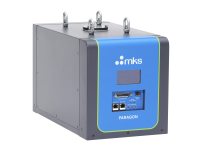
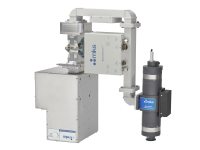
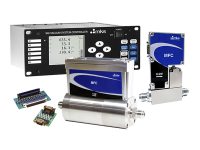
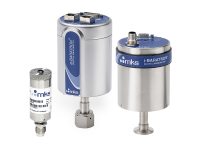
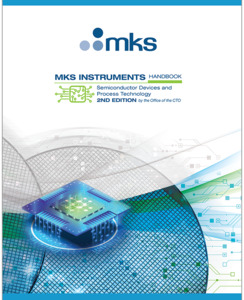
 Ultra-High Velocity
Ultra-High Velocity